Community Lesson Plan
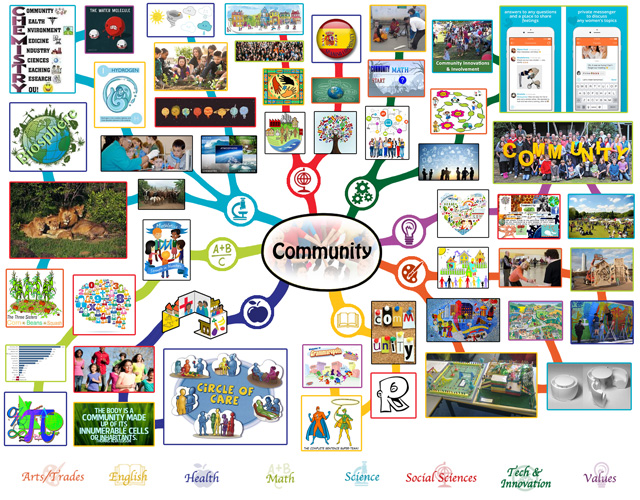
Community Lesson Plan Mindmap – Click to Enlarge
CLICK ICONS TO JUMP DIRECTLY TO EACH SUBJECT ON THIS PAGE








This page is a free-shared lesson plan archive for teaching all educational subjects within the context and theme of “Community”. It is purposed for use in community education environments, homeschool environments, traditional schooling environments, or as a supplemental and fun addition to any education program. As part of the complete Education for Life Program, this lesson plan is specifically designed to work in conjunction with the other components: Foundations of Teaching, Curriculum, Teaching Strategies, Learning Tools and Toys, Evaluation Model, and The Ultimate Classroom. If you’d like to learn how all these components work together, click here. Click here for the specifics focused on just using the lesson plans:
CLICK HERE FOR A DETAILED TUTORIAL ON HOW TO USE THIS LESSON PLAN
NOTE: The colors are provided as a possible linear progression (red/easiest to violet/most challenging) for people that might prefer a more linear structure. Our core philosophy, however, is that through creativity every color can be made easy or challenging for any learning level.
RELATED PAGES (mouse-over for descriptions and click for complete pages)
EDUCATION OVERVIEW | HOW TO USE THIS COMPONENT | OUR OPEN SOURCE PURPOSE
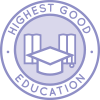
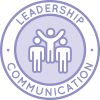
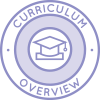
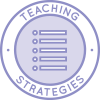
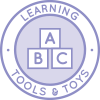
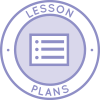
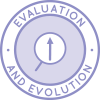
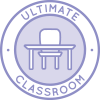
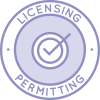

WAYS TO CONTRIBUTE TO EVOLVING THIS EDUCATION PROGRAM WITH US
SUGGESTIONS | CONSULTING | MEMBERSHIP | OTHER OPTIONS
A NOTE ABOUT ALL ONE COMMUNITY LESSON PLANS
The One Community lesson plans are intentionally designed for use in ANY educational environment and with ALL educational, cultural, religious/spiritual, and philosophical approaches to teaching and learning. They are designed without an ideological approach and specifically so they can be adapted to include the views, preferences, methodologies, and/or ideologies preferred by different parents and teachers.
For maximum flexibility and adaptation, they are also designed to be combined to teach multiple subjects at the same time. Doing this increases the creativity, effectiveness, and fun of your learning environment. Once we are on the property and operating our version of the complete school and Education for Life program, we will be adding video examples of how to combine the lessons. In the meantime, visit the Teaching Strategies page for a list of suggestions.
ARTS AND TRADES
CLICK HERE FOR THE COMPLETE SUBJECT OUTLINE FOR ARTS & TRADES
 | TEACHING ARTS AND TRADES WITHIN THE CONTEXT OF COMMUNITY |

| The Arts- Start drawing a picture of what community means to you. Then have 4 additional people contribute to the picture. Describe how this picture represents community*.
- Learn or create group folk dance* that demonstrates the building of community.
- Create a collage incorporating pictures of your family to demonstrate how your family creates a community and how it fits into your local community.
- Create an artistic sculpture/model* of a community center that includes the input/contributions of 10 other people in your ‘community’.
- Create artwork* that is designed to be beneficial to the community, and find a place that it can be placed within the community for all to enjoy.
- Design a workshop* for the community to come together to create artwork that is designed to be beneficial to the community, and find a place that it can be placed within the community for all to enjoy.
- Create an open source tutorial* for how to design and promote a community workshop for creating art that is placed in the community, including the details of a successful example from start to finish (which may be a workshop you created).
|

| Trades- Choose 3-5 professions that you feel are community oriented and beneficial to your community and create a collage* from images related to those professions.
- Ask ten people what they feel the top 5 careers/professions are that benefit community and why they feel that way. Present the top 10 results in a diorama/3D project* that showcases the professions and their primary benefits.
- Make a model* of your favorite aspect of your community, or something you would like to see added to your community that you feel would enhance the community.
- Create a floor plan/architectural model* of a community center that includes the input/contributions of 10 other people in your ‘community.’
- Create a piece of furniture* that is designed to be useful in the community, and find a place that it can be placed within the community for use by all.
- Create and open source a board game* that is themed on community that includes community-building activities.
- Create a blueprint/urban plan* for a community of 100-500 people that is designed in a way to best promote a cooperative community environment in all the major aspects of living: food, education, sharing items, etc. Open source your design and include a manual/report on all the aspects, why you designed them the way you did, and the benefits.
|
| CLICK HERE TO EMAIL US IF YOU HAVE AN IDEA TO ADD TO THIS SECTION |
* Please note that anything with an asterisk is just a suggestion. The diversity of options with asterisks are interchangeable and purposed to stimulate your own ideas. Any one of these suggestions could be replaced with a written paper, any form of art project (drawing, painting, music, paper mache, clay, wood, knitting/embroidery, metals, etc. etc.), an experiment, a presentation, a mindmap, a computer program, a web design project, a piece of poetry or a song, an interpretive dance or play, a group project, or anything else. What we feel is most important is that both the Learner and the Teacher agree on an exercise/activity they both feel would be maximally engaging, fun, and effective. If you come up with an idea we haven’t already thought of, please share it with us.
ENGLISH
CLICK HERE FOR THE COMPLETE SUBJECT OUTLINE FOR ENGLISH
Note: Any language can be substituted for English. The subject is listed here as “English” because that is the primary language of most of the people on the team, and the official language of the country we’re building our initial location in.
 | TEACHING ENGLISH WITHIN THE CONTEXT OF COMMUNITY |

| - Choose 5 words and draw its own ‘community of letters’* that pictorially represents the word, giving each letter their own ‘personality’/caricature, that when combined together show the meaning of the word.
- Write a poem* about how words work together to create a community whose purpose is to form a well-constructed sentence.
- Give a persuasive speech* about how sentences create communities of well-formed paragraphs, using specific words that are also community-related.
- Write a short story* about how paragraphs create communities by working together and collaborating to create well/properly formed stories.
- Pick a story you love and deconstruct it* into a community of its parts, giving each community member its own personality, purpose, and describe the aspects that distinguish it from all the other community members/story parts.
- Find 5 different well-known story structures (like The Hero’s journey) and write a ‘biography’* as if each one is an actual person, and include the story of them combining together to create a new community that forms together with the goal of creating an amazing new story.
- Create a series of children’s books* that each use a different community (community of letters, of words, of paragraphs, of stories, of genres, etc.) to teach about the structure and use of each one it precedes (like how letters create communities to form words).
|
| CLICK HERE TO EMAIL US IF YOU HAVE AN IDEA TO ADD TO THIS SECTION |
* Please note that anything with an asterisk is just a suggestion. The diversity of options with asterisks are interchangeable and purposed to stimulate your own ideas. Any one of these suggestions could be replaced with a written paper, any form of art project (drawing, painting, music, paper mache, clay, wood, knitting/embroidery, metals, etc. etc.), an experiment, a presentation, a mindmap, a computer program, a web design project, a piece of poetry or a song, an interpretive dance or play, a group project, or anything else. What we feel is most important is that both the Learner and the Teacher agree on an exercise/activity they both feel would be maximally engaging, fun, and effective. If you come up with an idea we haven’t already thought of, please share it with us.
HEALTH
CLICK HERE FOR THE COMPLETE SUBJECT OUTLINE FOR HEALTH
 | TEACHING HEALTH WITHIN THE CONTEXT OF COMMUNITY |

| - Choose a way to showcase* 5 activities in your community that promote health and well being and give a brief explanation for how you think each is an example of health and/or well being. (*draw a picture, make a collage, demonstrate, do a speech, etc.)
- Ask people in your community to give you examples of community activities for each of the following categories of health: nutritional, physical, emotional/mental/social, and spiritual. Choose and list* 3 activities to find out more about from each category and give an explanation why you chose each.
- Consider the body as a ‘community’ of collaborative and cooperative components. Choose 10 parts of the body and write a 10-paragraph exploration and/or story* about how they synergistically function.
- Imagine you are the digestive system and write a story* about how 10 different parts of the system have their own personalities based on their functions and all come together as a community of collaborators.
- Imagine you are the immune system and write a play* about how all the different parts of the system have their own personalities based on their functions and how they all come together as a community of collaborators.
- Write a comic book* about how all the different parts of the nervous system, skeletal system, and muscular system have their own personalities based on their functions and each create their own community for a specific purpose, and how they all come together as a community of collaborators for a larger goal.
- Produce a videotaped 5 story series* about the main categories of health: nutritional, physical, emotional/mental/social, and spiritual. Give each component inside of each category their own personalities based on their functions and write the story of how each came together to create their own community for a specific purpose, then the story of how all 4 communities came together as a community of collaborators for a larger goal. Open source your stories as a learning tool or tutorial for health/wellness.
|
| CLICK HERE TO EMAIL US IF YOU HAVE AN IDEA TO ADD TO THIS SECTION |
* Please note that anything with an asterisk is just a suggestion. The diversity of options with asterisks are interchangeable and purposed to stimulate your own ideas. Any one of these suggestions could be replaced with a written paper, any form of art project (drawing, painting, music, paper mache, clay, wood, knitting/embroidery, metals, etc. etc.), an experiment, a presentation, a mindmap, a computer program, a web design project, a piece of poetry or a song, an interpretive dance or play, a group project, or anything else. What we feel is most important is that both the Learner and the Teacher agree on an exercise/activity they both feel would be maximally engaging, fun, and effective. If you come up with an idea we haven’t already thought of, please share it with us.
MATH
CLICK HERE FOR THE COMPLETE SUBJECT OUTLINE FOR MATH
 | TEACHING MATH WITHIN THE CONTEXT OF COMMUNITY |

| - Talk to people in your community* to help you identify one example of something used in the community for each of the following numbers: 1, 2, 3, 5, 8, 10, 12, 13, 15, 20. (example: a dozen eggs, a pair of shoes)
- Think of addition, subtraction, multiplication, and division as each having their own personalities based on their function and create a story* of how they all function individually then come together to create a cooperative community with the common goal of ‘equations’.
- Choose 5 common numerical patterns and/or relationships and research and identify 2 real world examples that use/display each*. (could be found in nature, society, or other things)
- Do exploratory research on 5 different communities and chart* their population growth and equations that go along with it.
- Study the effects of 10 specific communities of your choice (picking from specific religious, social, familial, corporate, etc. communities) on economy and create mathematical equations and charts* that show the effects each have had over time.
- Use mathematics to understand basic economics and globalization from a community perspective and write an article* about this.
- For each major trigonometric function type, use the function to explain an aspect of community, then reverse your process and use community to teach that trigonometric function. Open source your project and processes*.
|
| CLICK HERE TO EMAIL US IF YOU HAVE AN IDEA TO ADD TO THIS SECTION |
* Please note that anything with an asterisk is just a suggestion. The diversity of options with asterisks are interchangeable and purposed to stimulate your own ideas. Any one of these suggestions could be replaced with a written paper, any form of art project (drawing, painting, music, paper mache, clay, wood, knitting/embroidery, metals, etc. etc.), an experiment, a presentation, a mindmap, a computer program, a web design project, a piece of poetry or a song, an interpretive dance or play, a group project, or anything else. What we feel is most important is that both the Learner and the Teacher agree on an exercise/activity they both feel would be maximally engaging, fun, and effective. If you come up with an idea we haven’t already thought of, please share it with us.
SCIENCE
CLICK HERE FOR THE COMPLETE SUBJECT OUTLINE FOR SCIENCE
 | TEACHING SCIENCE WITHIN THE CONTEXT OF COMMUNITY |

| Life Sciences- Draw a picture* that shows 5 types of animals (including insects) that you think work the most as communities and why you feel that way.
- Describe in a short paper or presentation* how the three sisters (squash, beans, and corn) or something similar work together as a community.
- Study how trees in a forest work as a community including how communicate with each other and pass nutrients to each other. Create a presentation* to share what you learned.
- Create a multimedia presentation* on any organism of your choice and how genetics has influenced its community and/or vice versa, and include hypothesis on where it may go in the future.
- Write a lesson plan* teaching microbiology from a community perspective.
- Choose 30 organisms within an ecosystem and study how they work together to create a community. Create an infographic and a written description* for your findings.
- Choose 2 related communities of organisms and describe how they work together to support each other. Write and open source a step by step tutorial* on how to improve the interaction between those two organisms in a way that would improve the earth.
|

| Physical Sciences- Organize 2-5 members of your community (family, friends, etc.) and have them interact in a way that demonstrates a law of physics of your choice. Then discuss with them* how it worked.
- Draw 10 ‘tools’/elements* in chemistry as a community, showing how they interact.
- Pick an element to use as the center of a personified story, and tell a community story* of that element having interactions with at least 10-15 other elements.
- Choose a community (family, friends, school, etc.) interaction that you witnessed or were part of and describe it in a 5 to 10 page paper*. Include a description of the event as a collection of analogies using laws of physical sciences.
- Create a slideshow* of the 20 components of chemistry or physics that you feel are the most important/significant by creating the story of their ‘community’ and personifying each component and documenting their interactions.
- Create a multimedia presentation* about thermodynamics using community as the structure, by teaching interactions of personified components.
- Write and teach a high school level lesson plan* on quantum mechanics using a personified community that consists of its most important components and open source your lesson plan and the results. Have other members of the physics world contribute 3-5 ideas each to the lesson plan before or after you teach it.
|

| Earth Sciences- Draw a picture* of our solar system as a community and name its members.
- Discuss how your community prepares for or would respond to 5-10 different types of weather and geological events and write two to three sentences* about each one.
- Explore your local geological, meteorological, or astronomical society and interview 3-5 people in it and write a 2-3 page paper* about how their membership, events, community, and field have evolved over time.
- Research a global geological, meteorological, atmospheric, or astronomical society and interview 3-5 people in it. Create a graphic* that shows about how their membership, events, community, and field have evolved over time. Include differences between the global community and a local community.
- Write a fiction story* of the tectonic plates theory as a personified community. From their perspective, describe how/why/when they made their major movements.
- Study the meteorological patterns of earth as if it were a community of weather working together/affecting each other. Write a personification* of each type of weather, giving it a name and personality, and from their perspective, describe how/why/when they do what they do and in what ways they interact with other community members.
- Write an open source manual* about all the branches of earth science as part of one larger community and how people can learn about and become involved with them. Include guides that describe each branch as a smaller community within the larger community, and give guidance and at least 100 resources for how a person can gain information about the science, get involved with and interact with each community.
|
| CLICK HERE TO EMAIL US IF YOU HAVE AN IDEA TO ADD TO THIS SECTION |
* Please note that anything with an asterisk is just a suggestion. The diversity of options with asterisks are interchangeable and purposed to stimulate your own ideas. Any one of these suggestions could be replaced with a written paper, any form of art project (drawing, painting, music, paper mache, clay, wood, knitting/embroidery, metals, etc. etc.), an experiment, a presentation, a mindmap, a computer program, a web design project, a piece of poetry or a song, an interpretive dance or play, a group project, or anything else. What we feel is most important is that both the Learner and the Teacher agree on an exercise/activity they both feel would be maximally engaging, fun, and effective. If you come up with an idea we haven’t already thought of, please share it with us.
SOCIAL SCIENCES
CLICK HERE FOR THE COMPLETE SUBJECT OUTLINE FOR SOCIAL SCIENCES
 | TEACHING SOCIAL SCIENCES WITHIN THE CONTEXT OF COMMUNITY |

| - In a picture*describe your family as a community and what the roles of each member are.
- Create a list* of 10 different communities that you are a part of. (Include global, national, and local)
- Write two pages on each* of what you believe to be the 3 most influential communities in your country and include why you chose each.
- Interview people who are in different communities from yourself and write a paper* that summarizes the social science aspects of each community and compare/contrast the results of your interview.
- Study the effects economics has on a community and create an a 5 to 7 page report* that includes a page on how this information can be used to benefit your local community.
- Study your local community and identify 20 social science elements you believe are most foundational to the growth and maintenance of the community. Create a visual representation* showing each element, why you chose it, and how it contributes to the growth of the community.
- Choose something you consider to be a ‘pillar of civilization’ and write a publicly accessible, open-source blog/tutorial* for how you think that improving that thing could improve the world. Share how you would improve it and how it would enhance the world as a whole.
|

| Foreign Languages
(Each of the following is to be completed in the foreign language(s) being studied)- Learn words for different community related concepts.
- Read & write with words for community related concepts.
- Explore ‘community’ in fiction.
- Explore & create different types of literature in relation to community.
- Compose a new piece of literature about community.
- Explore the complete history of and writings about community words.
- Write a dissertation level paper on community.
|
| CLICK HERE TO EMAIL US IF YOU HAVE AN IDEA TO ADD TO THIS SECTION |
* Please note that anything with an asterisk is just a suggestion. The diversity of options with asterisks are interchangeable and purposed to stimulate your own ideas. Any one of these suggestions could be replaced with a written paper, any form of art project (drawing, painting, music, paper mache, clay, wood, knitting/embroidery, metals, etc. etc.), an experiment, a presentation, a mindmap, a computer program, a web design project, a piece of poetry or a song, an interpretive dance or play, a group project, or anything else. What we feel is most important is that both the Learner and the Teacher agree on an exercise/activity they both feel would be maximally engaging, fun, and effective. If you come up with an idea we haven’t already thought of, please share it with us.
TECHNOLOGY AND INNOVATION
CLICK HERE FOR THE COMPLETE SUBJECT OUTLINE FOR TECHNOLOGY AND INNOVATION
 | TEACHING TECHNOLOGY & INNOVATION WITHIN THE CONTEXT OF COMMUNITY |

| Technology- Use a new app* (audio and/or video) to interview 3 people about what community means to them.
- Choose what you feel are the top 5 electronic toys that help to create/enhance a community environment and write a sentence* to explain why you chose each.
- Make a video* using video editing software that you title “My Community” and share it with your friends and family.
- Write an analysis* of 10+ community-building apps/software that compares and contrasts the features, usability, and usefulness of each.
- Create a multimedia presentation* that ranks and showcases your top ten picks for technologies that have contributed most to local/small community development and/or enhancement. Include your rationale for your choice and rank for each.
- Lead a roundtable discussion*on how new technologies that are being integrated into housing and/or transportation are enhancing and/or detracting the development/stability of community.
- Create a Youtube video* that explores the role of technology in forwarding our global community including a historical analysis and how it can be applied even better in the future.
|

| Innovation- Think of your favorite thing to do alone. Now think of how to make it even more fun doing it with others. Get a group of at least 3 people to do what you came up with. Discuss* with them your experience of doing the activity alone and then with them.
- Create a community-based (multi-player) game* for an electronic toy that was originally designed for a single user.
- Collaborate with others to come up with a way to capture your community in a way that can be shared with others, combining at least 5 different ways of showcasing/communicating and implementing it as a group. Share this experience on social media*.
- Compare & contrast 10+ community building apps/softwares and choose the best features from each and write up a description* for a new app/software that would integrate those best features and any additional features that you think of.
- Create a new way* to help two bring together two communities together in a mutually beneficial collaboration. Record the experience* and open source publish how this works.
- Study the history of innovative ways that communities have formed and developed, and create an open source tutorial* that people could use to create a community of their own.
- Imagine a new community that you think should exist and create and write down* an open source strategy for forming it.
|
| CLICK HERE TO EMAIL US IF YOU HAVE AN IDEA TO ADD TO THIS SECTION |
* Please note that anything with an asterisk is just a suggestion. The diversity of options with asterisks are interchangeable and purposed to stimulate your own ideas. Any one of these suggestions could be replaced with a written paper, any form of art project (drawing, painting, music, paper mache, clay, wood, knitting/embroidery, metals, etc. etc.), an experiment, a presentation, a mindmap, a computer program, a web design project, a piece of poetry or a song, an interpretive dance or play, a group project, or anything else. What we feel is most important is that both the Learner and the Teacher agree on an exercise/activity they both feel would be maximally engaging, fun, and effective. If you come up with an idea we haven’t already thought of, please share it with us.
VALUES
CLICK HERE FOR THE COMPLETE SUBJECT OUTLINE FOR VALUES
 | TEACHING VALUES WITHIN THE CONTEXT OF COMMUNITY |

| - Write a pamphlet* on how to make a community event successful. Use this pamphlet to help at least 2 other communities put on a successful event*.
- Ask 10 people what their 3-5 examples of community would be. Create a pie chart* that displays all of the results.
- Create ten questions about different aspects of things you value about community. Interview 10 people that are each from different communities and ask them each of your questions. Compare and contrast their responses and how the values may be similar and/or different from one community to another in a presentation*.
- Talk to 10 of your community/family and ask them about the most significant ‘community’ events they participated in and how this affected their life or values. Create a presentation* to share these with others in the community.
- Choose a community event that interests you and attend it and explore what makes that event successful, choosing your top ten features. Now choose another type of community event that you feel would benefit from those 10 aspects, and interview 10 people from the second community and tell them about the 10 aspects you would suggest and a way to integrate each and ask for their feedback. Write a paper about the experience including the feedback you got from the interviewees.
- Make a list of 40 things you think are valuable to community and have 10 people rank them in order of importance to them. Compare the results and organize a community event based on the top ten. Poll 20+ people that attended the event (include as many as possible that were from the initial interviews) to find out how the event matched up to their idea of a successful community event, and create a full report on the entire experience and results*.
- Interview 10+ people you consider to be successful community leaders on what they feel are the top values for creating/maintaining successful community environments. Research those elements/values further so that you can create an open source tutorial/guide* that discusses how to leverage those aspects to create a successful community/community event and include your interview results in the tutorial.
|
| CLICK HERE TO EMAIL US IF YOU HAVE AN IDEA TO ADD TO THIS SECTION |
* Please note that anything with an asterisk is just a suggestion. The diversity of options with asterisks are interchangeable and purposed to stimulate your own ideas. Any one of these suggestions could be replaced with a written paper, any form of art project (drawing, painting, music, paper mache, clay, wood, knitting/embroidery, metals, etc. etc.), an experiment, a presentation, a mindmap, a computer program, a web design project, a piece of poetry or a song, an interpretive dance or play, a group project, or anything else. What we feel is most important is that both the Learner and the Teacher agree on an exercise/activity they both feel would be maximally engaging, fun, and effective. If you come up with an idea we haven’t already thought of, please share it with us.
OTHER RESOURCES
We're building a resource section. Click here if you have a suggestion or resource for this page.
OPEN SOURCE SUBJECT RESOURCES (click icons for complete pages)



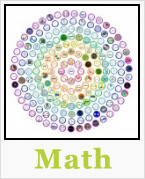



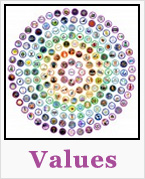
OPEN SOURCE CURRICULUM OUTLINES (click image for summaries and links to complete pages)
CARE
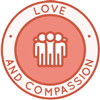
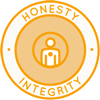
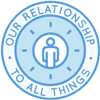
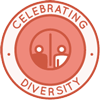
SHARE
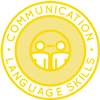
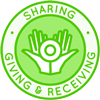
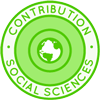
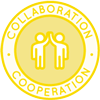
PLAY
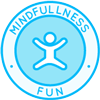
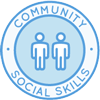
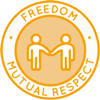
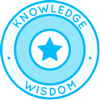
OPEN SOURCE TEACHING METHODOLOGY SUMMARIES
Montessori | Waldorf | Orff | Reggio | Multi-Intelligence | Bloom's Taxonomy | Study Tech | I-WE
INDEX OF ALL THE ONE COMMUNITY OPEN SOURCE LESSON PLANS

Click this image for the Lesson Plans for Life page with links to the rest of the lesson plans
THE WORLD'S LARGEST ONLINE FREE EDUCATION RESOURCE ARCHIVE
RELATED CONTENT AND OTHER RELATED RESOURCES
We're building this resource section. Click here if you have a suggestion or resource for this page.
























 One Community
One Community




